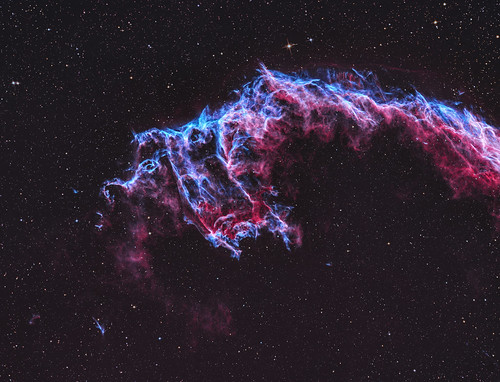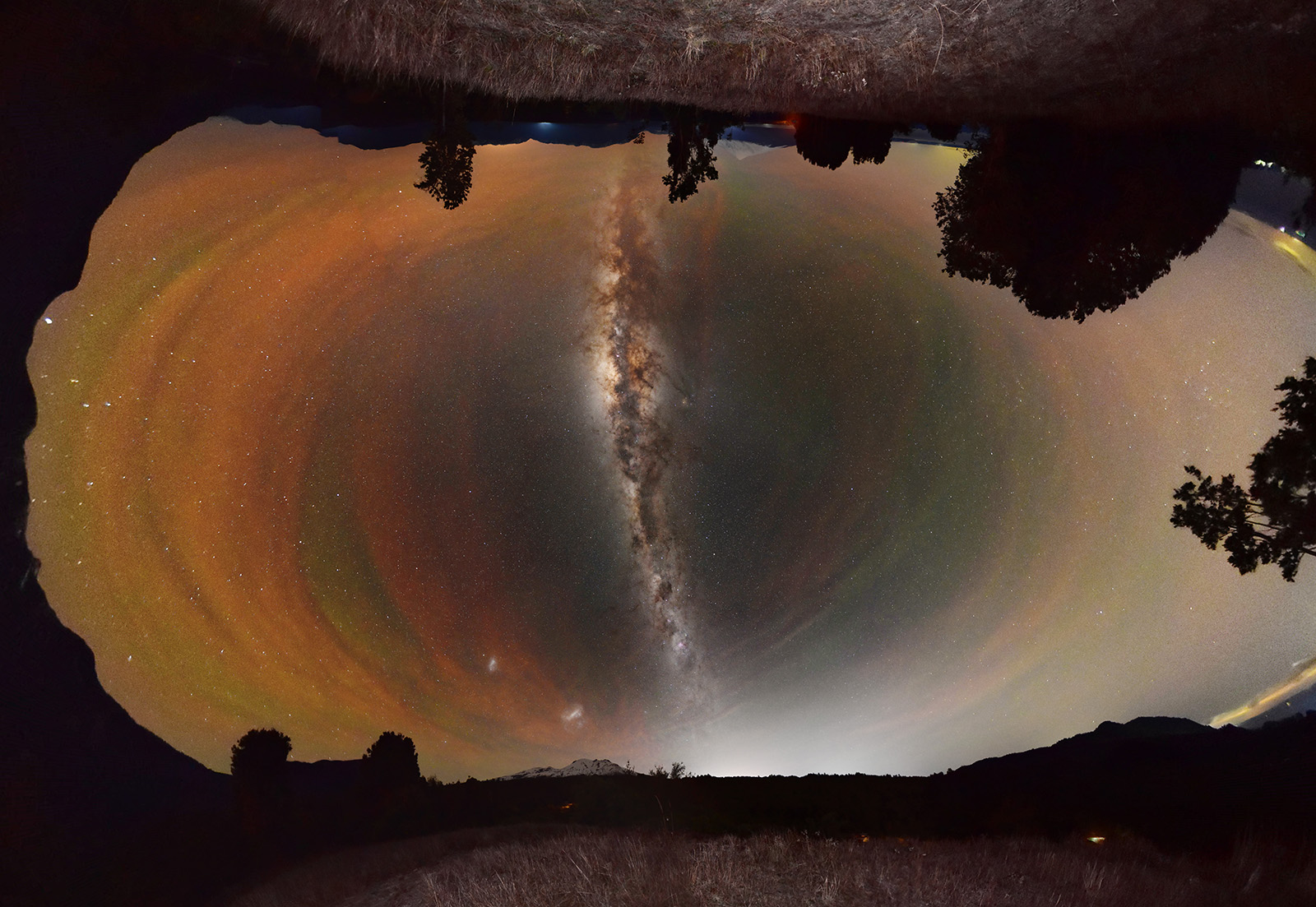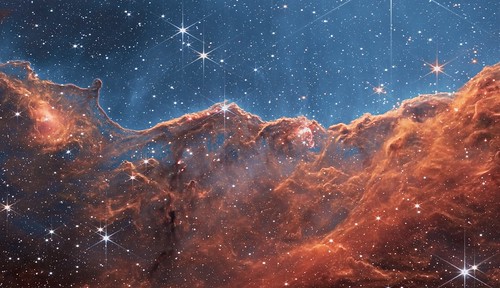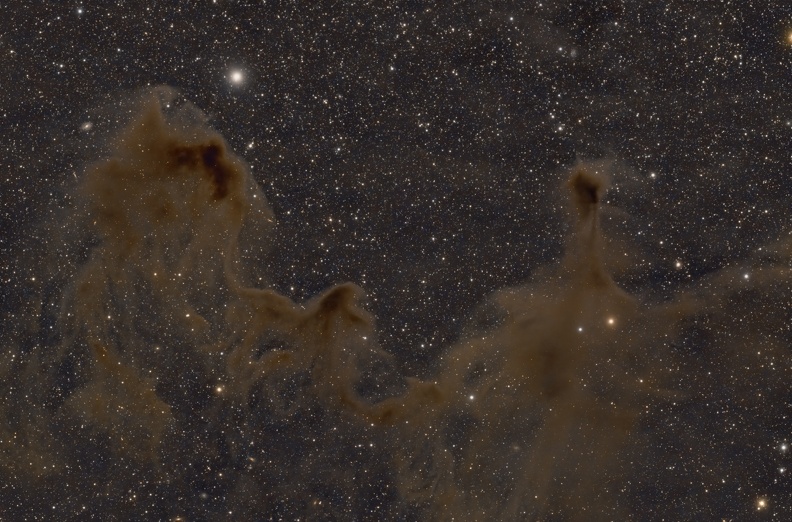Submissions: 2023 July
Submissions: 2023 July
__________________________________________________________________________________________________
Please post your images here.
Please see this thread before posting images; posting images demonstrates your agreement with
the possible uses for your image.
If hotlinking to an image, please ensure it is under 500K.
Hotlinks to images over 500K slow down the thread too much and will be disabled.
Thank you!
_________________________________________________________________________________________________
<- Previous submissions
Please post your images here.
Please see this thread before posting images; posting images demonstrates your agreement with
the possible uses for your image.
If hotlinking to an image, please ensure it is under 500K.
Hotlinks to images over 500K slow down the thread too much and will be disabled.
Thank you!
_________________________________________________________________________________________________
<- Previous submissions
Know the quiet place within your heart and touch the rainbow of possibility; be
alive to the gentle breeze of communication, and please stop being such a jerk. — Garrison Keillor
alive to the gentle breeze of communication, and please stop being such a jerk. — Garrison Keillor
Re: Submissions: 2023 July
Stars and Stripes in SHO
www.skiesburnelectric.com
Copyright: Kevin Rasso Greetings Asterisknuats!
I submit my reprocessed North American Nebula , titled Stars and Stripes in SHO for discussion. Trying to represent 300nm of light wavelength with only 24nm is a challenge to say the least. But the subtle details and the revelations of various chemistry at work are fascinating. Even more so, when you consider this can be captured by an amateur using off the shelf equipment from a suburban backyard, we live in amazing times!
Captured from my backyard using Stellarvue SVX140T with FFFR 700mm at f/5. SII:25×600, Ha: 23×600, OIII only 4×600! Paramount MyT, FLI ML16200, Chroma 8nm filters.
Processed with PixInsight using the new RC XT tools (BXT, NXT, SXT), as well as the ForaxxUtility. I then adjusted curves to make the colors show all the chemistry throughout this popular nebula complex.
Best regards,
Kevin
www.skiesburnelectric.com
Copyright: Kevin Rasso Greetings Asterisknuats!
I submit my reprocessed North American Nebula , titled Stars and Stripes in SHO for discussion. Trying to represent 300nm of light wavelength with only 24nm is a challenge to say the least. But the subtle details and the revelations of various chemistry at work are fascinating. Even more so, when you consider this can be captured by an amateur using off the shelf equipment from a suburban backyard, we live in amazing times!
Captured from my backyard using Stellarvue SVX140T with FFFR 700mm at f/5. SII:25×600, Ha: 23×600, OIII only 4×600! Paramount MyT, FLI ML16200, Chroma 8nm filters.
Processed with PixInsight using the new RC XT tools (BXT, NXT, SXT), as well as the ForaxxUtility. I then adjusted curves to make the colors show all the chemistry throughout this popular nebula complex.
Best regards,
Kevin
Re: Submissions: 2023 July
The Magnificent Sombrero Galaxy - M104
Celestron 9.25edgehd, Skywatcher EQ6rpro, 0.7x reducer, Celestron OAG, ASI174mm mini, ASI533mcpro, SVBony UVIR cut
Mar 28, 2023, 80x180s
Apr 2, 2023, 39x180s
Apr 9, 2023, 80x180s
Apr 13, 2023, 121x180s
Apr 14, 2023, 50x180s
Apr 15, 2023, 74x180s
Total Integration: 22h10m
PixInsight
Bortle 8
Higher resolution: https://astrob.in/txa6ve/B/
Celestron 9.25edgehd, Skywatcher EQ6rpro, 0.7x reducer, Celestron OAG, ASI174mm mini, ASI533mcpro, SVBony UVIR cut
Mar 28, 2023, 80x180s
Apr 2, 2023, 39x180s
Apr 9, 2023, 80x180s
Apr 13, 2023, 121x180s
Apr 14, 2023, 50x180s
Apr 15, 2023, 74x180s
Total Integration: 22h10m
PixInsight
Bortle 8
Higher resolution: https://astrob.in/txa6ve/B/
-
barretosmed
- Science Officer
- Posts: 482
- Joined: Thu Oct 12, 2017 6:04 pm
Re: Submissions: 2023 July
IC 2602 (The Southern Pleiades) AND Mel101 -- The open star clusters in the constellation of Carina
In the central region of the image we notice the IC 2602 (The Southern Pleiades) and in the upper right edge, the open cluster Mel 101
BEST DETAIL
https://www.astrobin.com/full/1iw8vx/0/
EQUIPMENT:
Esprit 150mm triplet
zwo asi 6200mc
Mount CEM120
Frames 38X100"
LOCATION: Munhoz - MG - Brazil
DATES: From 04/10/2023 to 04/12/2023
PROCESSING AND CAPTURE:
Adobe Photoshop, ASTAP, SGP, PHD2 and PixInsight
Author: Fernando Oliveira de Menezes
Email: Barretosmed@hotmail.com
(Organizing author of the book Amateur Astrophotography in Brazil)
https://clubedeautores.com.br/livro/ast ... -no-brasil
In the central region of the image we notice the IC 2602 (The Southern Pleiades) and in the upper right edge, the open cluster Mel 101
BEST DETAIL
https://www.astrobin.com/full/1iw8vx/0/
EQUIPMENT:
Esprit 150mm triplet
zwo asi 6200mc
Mount CEM120
Frames 38X100"
LOCATION: Munhoz - MG - Brazil
DATES: From 04/10/2023 to 04/12/2023
PROCESSING AND CAPTURE:
Adobe Photoshop, ASTAP, SGP, PHD2 and PixInsight
Author: Fernando Oliveira de Menezes
Email: Barretosmed@hotmail.com
(Organizing author of the book Amateur Astrophotography in Brazil)
https://clubedeautores.com.br/livro/ast ... -no-brasil
-
danielespitiacol
Re: Submissions: 2023 July
Barnard 312 and RCW 163
Time: 19/06/2023
Location: Duitama, Colombia
Technical info:
Samyang 135mm + UHC + QHY183C 30x60s
Samyang 85mm + Ha + QHY5III178M 6x300s
IEXOS 100-2 Mount
SV165 + Orion Starshoot autoguider
Processed in pixinsight
Copyright: Daniel Espitia
Email: danielespitiacol@gmail.com
Instagram: @danielespitiacolombia https://live.staticflickr.com/65535/530 ... 1b14_k.jpg
Time: 19/06/2023
Location: Duitama, Colombia
Technical info:
Samyang 135mm + UHC + QHY183C 30x60s
Samyang 85mm + Ha + QHY5III178M 6x300s
IEXOS 100-2 Mount
SV165 + Orion Starshoot autoguider
Processed in pixinsight
Copyright: Daniel Espitia
Email: danielespitiacol@gmail.com
Instagram: @danielespitiacolombia https://live.staticflickr.com/65535/530 ... 1b14_k.jpg
Last edited by bystander on Tue Jul 04, 2023 5:14 am, edited 1 time in total.
Reason: Please, no hot links to images > 500 kb. Substituted smaller image.
Reason: Please, no hot links to images > 500 kb. Substituted smaller image.
Re: Submissions: 2023 July
That is a superb image! I particularly like your portrait of the remarkable luminary of IC 2602, Theta Carina. This star is much brighter, hotter and more massive than any of the other stars. I know I have read that if Theta Carina had formed with all that mass at the same time as the other stars of IC 2602, it would have evolved into gianthood long ago. Instead it is a main sequence star. There has been speculation that Theta Carina is a blue straggler, a star that has gained mass from another star and sent fresh hydrogen into its core.barretosmed wrote: ↑Tue Jul 04, 2023 12:40 am IC 2602 (The Southern Pleiades) AND Mel101 -- The open star clusters in the constellation of Carina
In the central region of the image we notice the IC 2602 (The Southern Pleiades) and in the upper right edge, the open cluster Mel 101
BEST DETAIL
https://www.astrobin.com/full/1iw8vx/0/
EQUIPMENT:
Esprit 150mm triplet
zwo asi 6200mc
Mount CEM120
Frames 38X100"
LOCATION: Munhoz - MG - Brazil
DATES: From 04/10/2023 to 04/12/2023
PROCESSING AND CAPTURE:
Adobe Photoshop, ASTAP, SGP, PHD2 and PixInsight
Author: Fernando Oliveira de Menezes
Email: Barretosmed@hotmail.com
(Organizing author of the book Amateur Astrophotography in Brazil)
https://clubedeautores.com.br/livro/ast ... -no-brasil
I love the fact that your picture not only shows us that Theta Carina is brighter than the other stars of the cluster, but that it is, in fact, bluer! Yes, it is, and we can see it in your picture! I have checked it with my software, and Theta Carina has by far the bluest B-V index of all the stars in the cluster.
I also love your portrait of Melotte 101. I checked the brightest red star in the cluster with my software and some other tools, and it appears to reside at a distance of almost 7,000 light-years. That's far away! IC 2602, by contrast, is only some 500 light-years away, and it is probably associated with the Sco-Cen association of bright B-type stars in Scorpius, Lupus, Centaurus, Musca and Crux.
Ann
Color Commentator
-
Jean-Baptiste Auroux
- Ensign
- Posts: 78
- Joined: Tue Nov 14, 2017 10:06 pm
Re: Submissions: 2023 July
Wizard nebula (NGC 7380)
Full version : https://cdn.astrobin.com/thumbs/TdEuArE ... Of1CZ1.png
The wizard nebula in wide field, 8000LY away...
TSA102 - Atik16200M - Baader SHO ultra-narrowband
Total integration: 18h30
Fouras (France)
Pixinsight & PS
Copyright: Jean-Baptiste Auroux
https://millenniumphoton.com/
https://www.astrobin.com/users/Jean-Baptiste_Paris/
Full version : https://cdn.astrobin.com/thumbs/TdEuArE ... Of1CZ1.png
The wizard nebula in wide field, 8000LY away...
TSA102 - Atik16200M - Baader SHO ultra-narrowband
Total integration: 18h30
Fouras (France)
Pixinsight & PS
Copyright: Jean-Baptiste Auroux
https://millenniumphoton.com/
https://www.astrobin.com/users/Jean-Baptiste_Paris/
Re: Submissions: 2023 July
Location : Wadi Rum, Jordan
Date : June 22
Credit : Roi Levi
-
tommasostella
- Ensign
- Posts: 60
- Joined: Mon Nov 11, 2019 4:34 pm
Re: Submissions: 2023 July
M27 Dumbbell nebula
https://www.facebook.com/tommaso.m.stella
Copyright: Tommaso Stella
From: Taranto - Italy
Lights:
406x10s + 172x16s (ZWO ASI 224mc + UV/IR Cut)
27x300s Ha 3nm + 18x300s OIII 3nm (QHY 294m Pro)
Sky: SQM 20,3
Telescope: Sky-Watcher Quattro 250P
Camera: QHY 294m Pro + ZWO ASI 224mc
Filters: Optolong Ha + OIII 3nm
Mount: Sky-Watcher AZ-EQ6 GT
Processing: Photoshop, Pixinsight
https://www.facebook.com/tommaso.m.stella
Copyright: Tommaso Stella
From: Taranto - Italy
Lights:
406x10s + 172x16s (ZWO ASI 224mc + UV/IR Cut)
27x300s Ha 3nm + 18x300s OIII 3nm (QHY 294m Pro)
Sky: SQM 20,3
Telescope: Sky-Watcher Quattro 250P
Camera: QHY 294m Pro + ZWO ASI 224mc
Filters: Optolong Ha + OIII 3nm
Mount: Sky-Watcher AZ-EQ6 GT
Processing: Photoshop, Pixinsight
- Chris Peterson
- Abominable Snowman
- Posts: 18594
- Joined: Wed Jan 31, 2007 11:13 pm
- Location: Guffey, Colorado, USA
- Contact:
Re: Submissions: 2023 July
NGC7635
The Bubble Nebula. A strong H II structure, energized and blown by a hot, massive Wolf-Rayet star. A tricky imaging target because of its wide brightness range. NOTE: This is a better processed version of a previous submission that brings out more of the hydrogen emissions in the region.
Details:
QSI 660 camera on 250mm RC, Astronomic RGB, Ha filters
Ha (96 min), RGB (20 min each)
Processed with PixInsight and Photoshop
Final image resolution 0.69 arcsec/pixel, 21 arcminute wide field
_
The Bubble Nebula. A strong H II structure, energized and blown by a hot, massive Wolf-Rayet star. A tricky imaging target because of its wide brightness range. NOTE: This is a better processed version of a previous submission that brings out more of the hydrogen emissions in the region.
Details:
QSI 660 camera on 250mm RC, Astronomic RGB, Ha filters
Ha (96 min), RGB (20 min each)
Processed with PixInsight and Photoshop
Final image resolution 0.69 arcsec/pixel, 21 arcminute wide field
_
Chris
*****************************************
Chris L Peterson
Cloudbait Observatory
https://www.cloudbait.com
*****************************************
Chris L Peterson
Cloudbait Observatory
https://www.cloudbait.com
-
nazareno kurriger
- Ensign
- Posts: 19
- Joined: Mon Oct 12, 2020 2:22 pm
Re: Submissions: 2023 July
luna llena julio 02/07/2023
equipo: nikon d7100, nikkor 300mm ais f4.5, TC1.4
doble exposicion, para nubes y detalles de la luna.
equipo: nikon d7100, nikkor 300mm ais f4.5, TC1.4
doble exposicion, para nubes y detalles de la luna.
-
nazareno kurriger
- Ensign
- Posts: 19
- Joined: Mon Oct 12, 2020 2:22 pm
Re: Submissions: 2023 July
via lactea
fecha:28/06/2023, 06:30hs
equipo: nikon d750, nikkor 18-35 afd f3.5/5.6
exif: df18mm, f3.5, iso100, expo 20seg
single shoot
ubicacion: San Jeronimo Sud, Santa Fe, Argentina
fecha:28/06/2023, 06:30hs
equipo: nikon d750, nikkor 18-35 afd f3.5/5.6
exif: df18mm, f3.5, iso100, expo 20seg
single shoot
ubicacion: San Jeronimo Sud, Santa Fe, Argentina
Re: Submissions: 2023 July
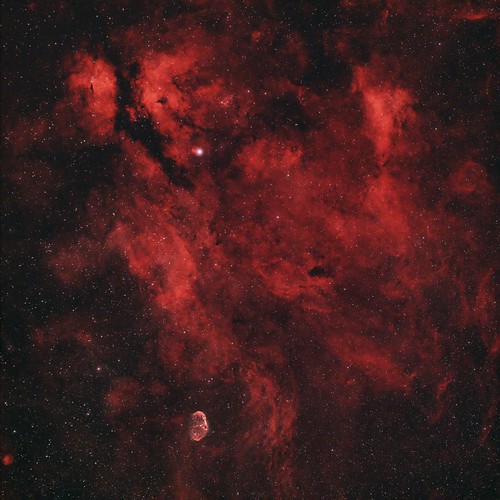
Sadr Region, Butterfly Nebula, and Crescent Nebula
Captured from Bortle Class 8-9 city skies with a ZWO ASI533MC camera, 135mm f/2 lens, and dual-band (H-alpha and O-iii emission) filter, with an integration time of one hour.
Location: Des Plaines, Illinois
Date: July 4, 2023
Copyright: Imran Sultan
Re: Submissions: 2023 July
Airglow bands in south of Chile
Copyright: Marcelo Maturana Rodríguez (@matuutex)
Location: Ensenada, Puerto Varas, Chile
Instagram: http://www.instagram.com/matuutex
Copyright: Marcelo Maturana Rodríguez (@matuutex)
Location: Ensenada, Puerto Varas, Chile
Instagram: http://www.instagram.com/matuutex
-
Mathieu80
Re: Submissions: 2023 July
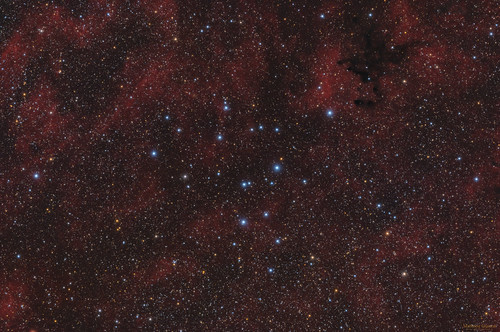 M39 by Mathieu Guinot, sur Flickr
M39 by Mathieu Guinot, sur FlickrM39, also known as NGC 7092, is a beautiful open cluster located only 800 light-years away in a dense portion of the Milky Way in Cygnus. Its age is estimated between 230 and 300 million years and it has only about thirty stars for a diameter of 7 light years. Its angular size is about 31 arc minutes which corresponds to about the same size as that of the full Moon.
I really like those clusters surrounded by Halpha emission which highlights them and brings depth to the picture.
18h22 exposures from 1406 to 010723 with :
Telescope TOA 130 FL645
EQ6-r mount
Camera ZWO 2600mm & LRVBHa Antlia filters
Processed with PixInsight & Photoshop
L : 26 x 120s
RGB : 40/40/40 x 120s
Ha : 78 x 300s
- PierandreaFolle
- Ensign
- Posts: 23
- Joined: Thu Mar 05, 2020 4:16 pm
Re: Submissions: 2023 July
Finally I was able to realize this photo, planned and in my mind since years. Every time the bales were moved some days before my planned shot. This year I've done this amazing 4 hours long startrail while I stargazing.
I try to relate thee circles shapes of the srars caused by Earth moving and the same shape of bale. A game of shape in the frame, completed by the vertical Foreground lines, leading our eye to Polar, the startrail's center.
If circles and lines seems to dance together, times aspect is the opposite. The Universe and sky are in continuous movement and expansion while the bales are synonym of a static object, stopped here waiting patiently to be used by the farmers.
When I realize this kind of image, like many people noticed, I inspire to Van Gogh. The starry sky, the use of colors and composition attention recall alway his works.
"I like the night very much, I feel much better at night than during the day, just like the madmen and artists who prefer the night." (Letter to Theo van Gogh, October 23, 1889)
Copyright: Pierandrea Folle
 The Circle Of Life by Pierandrea Folle, su Flickr
The Circle Of Life by Pierandrea Folle, su Flickr-
Astrodude13
- Ensign
- Posts: 44
- Joined: Sun Jan 19, 2014 11:44 pm
Re: Submissions: 2023 July
June 9th Solar Activity
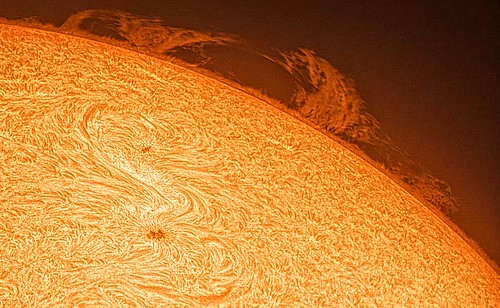 Solar Prominence Jun 9 2023 by Blake Estes, on Flickr
Solar Prominence Jun 9 2023 by Blake Estes, on Flickr
This video consists of 75 still frames made from the best 15% of 3000 frames for each of the 75 videos, and were taken over the course of nearly an hour.
The equipment is a Daystar Quantum 0.4 Angstrom H-alpha filter on an Explore Scientific 127 scope, with a 4x barlow. The mount is a PlaneWave A200HR, and was recorded from Siding Spring Observatory.
 Solar Prominence Jun 9 2023 by Blake Estes, on Flickr
Solar Prominence Jun 9 2023 by Blake Estes, on FlickrThis video consists of 75 still frames made from the best 15% of 3000 frames for each of the 75 videos, and were taken over the course of nearly an hour.
The equipment is a Daystar Quantum 0.4 Angstrom H-alpha filter on an Explore Scientific 127 scope, with a 4x barlow. The mount is a PlaneWave A200HR, and was recorded from Siding Spring Observatory.
Re: Submissions: 2023 July
The thermal Venus images are taken by the instrument below:
16” f/4.5 Dobsonian + lensless Infiray T3
Then stacked and processed images from the videos.
Initially, I thought the image was out of focus, but after moving the sensor in and out, I found that it was actually in focus.
Although Venus is in the crescent phase in visible light, we can still see the whole ball under the thermal wavelength since the planet is super hot even at night.
I have done some math:
Venus's angular size is around 36sec=0.01degree today
Infiray pixel size is 17um=0.017mm
Telescope focal length = 400*4.5=1800mm
Venus image occupies: sin(0.01degree)*1800/0.017=18pixels
The calculation matches the image.
Hope you like them!
16” f/4.5 Dobsonian + lensless Infiray T3
Then stacked and processed images from the videos.
Initially, I thought the image was out of focus, but after moving the sensor in and out, I found that it was actually in focus.
Although Venus is in the crescent phase in visible light, we can still see the whole ball under the thermal wavelength since the planet is super hot even at night.
I have done some math:
Venus's angular size is around 36sec=0.01degree today
Infiray pixel size is 17um=0.017mm
Telescope focal length = 400*4.5=1800mm
Venus image occupies: sin(0.01degree)*1800/0.017=18pixels
The calculation matches the image.
Hope you like them!
-
Astrodude13
- Ensign
- Posts: 44
- Joined: Sun Jan 19, 2014 11:44 pm
Re: Submissions: 2023 July
 Solar Prominence Time-Lapse 14052023 by Blake Estes, on Flickr
Solar Prominence Time-Lapse 14052023 by Blake Estes, on FlickrI find the activity of the sun to be very interesting, and this time lapse video shows some very interesting solar activity both on and above the "surface".
Its hard to predict exactly what's going to happen when you see something occurring, and that's what makes it fascinating to watch, and of course its different every day! It was taken on May 14, 2023.
this movie was made from 100 frames made from the best 15% of 3000 frames for each of the individual 100 videos, and were taken over the course of over an hour.
The equipment is a Daystar Quantum 0.4 Angstrom H-alpha filter on an Explore Scientific 127 scope, with a 4x barlow. The mount is a PlaneWave A200HR, and recorded from Siding Spring Observatory, Australia.
-
Talalmnsr94
Re: Submissions: 2023 July
Processed in Siril and Affinity Photo.
Downloaded all filters from Mikulski Archive from James Webb Telescope Mission.
As this nebula was taken last year in July therefore as a birthday treat I did this photo processing again.
Only Histogram stretching was done in Siril, rest filter colors were added in Affinity Photo.
Was very excited with the photo process as I brought nearly as good as the Original submitted by Nasa.
-
eprimucci
- Asternaut
- Posts: 4
- Joined: Fri Apr 13, 2012 1:58 am
- AKA: Piri
- Location: Argentina
- Contact:
Re: Submissions: 2023 July
LDN 122, 118, 115, 129, 132 y 146 and The Dementors Nebula
https://piriprimucci.com/picture.php?/11/category/5
Copyright: Emilio Primucci
The Lynds Dark Nebula catalog was compiled by astronomer Beverly Turner Lynds in the mid-1960s while working at the Kitt Peak National Observatory. She made significant contributions to the study of interstellar matter and star formation. These nebulae are a type of interstellar cloud composed primarily of dust and gas that appears dark or opaque against the background of bright stars or glowing emission nebulae. Dark nebulae do not emit visible light themselves. Instead, they block or absorb the light from background stars or other bright sources, creating a silhouette-like appearance. They are primarily composed of microscopic dust particles, such as carbon-based compounds and silicates, along with cold molecular gas, typically made up of molecular hydrogen (H2).
This image, roughly 1.5 by 1 degree, contains six of these LDN objects: 122, 118, 115, 129, 132, and 146, listed counterclockwise starting from the top left. All six combined silhouettes form what I see as "The Dementors Nebula," inspired by J.K. Rowling's Harry Potter saga.
In the background, more than ten galaxies can be observed as well, with PGC 160996 being the most noticeable, with its spiral arms clearly visible despite its very small apparent size.
Full size (6Mb): https://piriprimucci.com/upload/2023/07 ... 89bca2.jpg
https://piriprimucci.com/picture.php?/11/category/5
Copyright: Emilio Primucci
The Lynds Dark Nebula catalog was compiled by astronomer Beverly Turner Lynds in the mid-1960s while working at the Kitt Peak National Observatory. She made significant contributions to the study of interstellar matter and star formation. These nebulae are a type of interstellar cloud composed primarily of dust and gas that appears dark or opaque against the background of bright stars or glowing emission nebulae. Dark nebulae do not emit visible light themselves. Instead, they block or absorb the light from background stars or other bright sources, creating a silhouette-like appearance. They are primarily composed of microscopic dust particles, such as carbon-based compounds and silicates, along with cold molecular gas, typically made up of molecular hydrogen (H2).
This image, roughly 1.5 by 1 degree, contains six of these LDN objects: 122, 118, 115, 129, 132, and 146, listed counterclockwise starting from the top left. All six combined silhouettes form what I see as "The Dementors Nebula," inspired by J.K. Rowling's Harry Potter saga.
In the background, more than ten galaxies can be observed as well, with PGC 160996 being the most noticeable, with its spiral arms clearly visible despite its very small apparent size.
Full size (6Mb): https://piriprimucci.com/upload/2023/07 ... 89bca2.jpg
-
Jessica Rojas
- Asternaut
- Posts: 6
- Joined: Thu Jul 06, 2023 11:10 pm
Re: Submissions: 2023 July
 buck supermoon by jessica rojas APOD by Jessica Rojas, en Flickr
buck supermoon by jessica rojas APOD by Jessica Rojas, en FlickrCopyright: Jessica Rojas
A Buck moon full at 90% is rising behind the bellydancer Muneerah. She's dancing with her gold wings with this almost Supermoon on June 30th 2023
Camera: Nikon Z8
EXIF: 400m - 10F - 160 ISO - 1/400
Location: Madrid, (Spain)
Time: 30/06/2023 (moonrise)
Distance from the shooting spot is 360 meters, one single shot
If you like my work, you can see more on my IG account: @jessica_rojas_jess
Thanks!


